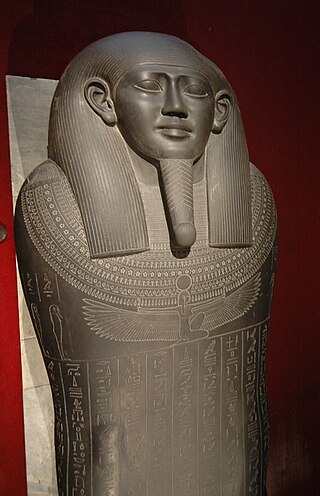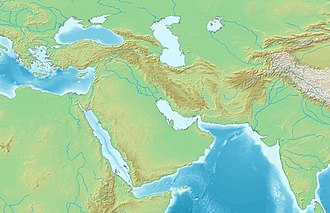Top Qs
Timeline
Chat
Perspective
Tabnit
6th-century BC Phoenician king of Sidon From Wikipedia, the free encyclopedia
Remove ads
Tabnit (Phoenician: 𐤕𐤁𐤍𐤕 TBNT) was the Phoenician King of Sidon c. 549–539 BC.[1] He was the father of King Eshmunazar II.
The capital of Tabnit was Sidon.
He is well known from his sarcophagus, decorated with two separate and unrelated inscriptions – one in Egyptian hieroglyphics and one in Phoenician script. It was created in the 6th century BC, and was unearthed in 1887 by Osman Hamdi Bey at the Ayaa Necropolis near Sidon together with the Alexander Sarcophagus and other related sarcophagi. Tabnit's body was found floating in the original embalming fluid and almost perfectly preserved, save for the face and neck which were not submerged, but Bey's men spilled all the fluid and left the body to rot in the desert sun, at which point it quickly decomposed to little more than bones and withered viscera.[2][3] Both the sarcophagus and Tabnit's decomposed skeleton are now in the Istanbul Archaeology Museums.[4]
The sarcophagus, together with the Sarcophagus of Eshmunazar II, was possibly acquired by the Sidonians following their participation in the Battle of Pelusium (525 BC),[5] and served as models for later Phoenician sarcophagi.[6]
Remove ads
Dating
Both the Tabnit sarcophagus and the Sarcophagus of Eshmunazar II are thought to originally date from the Twenty-sixth Dynasty of Egypt, which had its capital at Sais.[6] This is partially due to their resemblance to similar sarcophagi such as the Psamtik II-era Horkhebit sarcophagus from Saqqara, now in the Metropolitan Museum of Art.
- Skeleton of king Tabnit
- Head of king Tabnit
Notes
References
Wikiwand - on
Seamless Wikipedia browsing. On steroids.
Remove ads




